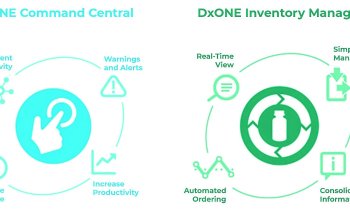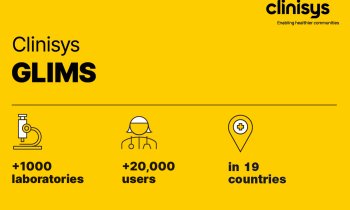Moving on
I saw the future of pathology – and it’s digital
Healthcare is going digital. No doubt about it, Prof. Hufnagl predicts. Information and communication technologies have gone beyond moving data from one place to the other; they are triggering stellar improvements in healthcare: diagnoses are becoming ever more precise, therapies ever more personalised. The extent to which the individual clinical disciplines have progressed in their technological development varies greatly. In pathology, for example, change has only just set in. However, it is already obvious, that digitisation will change the discipline forever.
Report: Karoline Laarmann

Scepticism towards digital systems is still widespread and fundamental questions regarding the sense and purpose of the new technology in the pathology department continue to be raised. These concerns are primarily caused by the significant necessary financial investments in hardware and software.
Basic equipment encompasses slide scanners, data storage devices and an image management system. There are many opinions as to whether and when the purchase of these digital pathology devices makes economic sense. Clinicians, normally not interested in viewing histological slides, are sometimes enthusiastic if they get brilliant overview images via DICOM access. However, there are – throughout Europe – very encouraging examples that demonstrate the successful step-by-step transformation from microscope-based histopathological diagnostics to digital diagnostics.
‘Unfortunately, these positive examples are not sufficiently published in the pathology community’, says Professor Peter Hufnagl, Head of Digital Pathology at the Institute of Pathology at Charité, Berlin, and President of the 13th European Congress on Digital Pathology in Berlin in 2016. ‘The two types of workflow, digital and analogue, can co-exist very well and, for some institutions, such a two-pronged approach might be the best solution in the long run. That means you don’t have to wait until you can afford fully-fledged digitisation. Start small!’
Workflows in the pathology lab will benefit with only one third of the diagnostic task being digitised. Communication with clinicians will become faster, simpler and more effective. For large institutes involved in research and teaching complete digitisation makes sense, Professor Hufnagl underlines: ‘The biobanks being established in the academic environment particularly profit from a digital slide archive, since it allows larger sample groups to be selected and to check whether certain slides are suitable for a research project.’
Many pathology labs are still hesitant to jump on the digital bandwagon although the industry has recognised the market potential long ago and is actively driving its rapid growth through technological innovation. The fact that the use of a virtual microscope saves a lot of money on expensive samples is only one of the arguments manufacturers use to lure new customers. More importantly, however, digital pathology optimises quality assurance and thus contributes to a lab’s competitiveness. Digitisation provides a better overview of comparable cases; it allows the application of quantitative methods to check diagnoses and accelerates obtaining second opinions.
Hufnagl is convinced that it is only a matter of time before digital pathology will prevail. In radiology, he points out, there were very similar concerns regarding on-screen readings – today this is standard operating procedure. The fact that, due to image volumes in pathology – 150.000 x 300.000 = 45000Mpixels – digitisation is taking root 20 years later than in radiology, is an advantage. We can learn from radiologists’ experiences and from many of their solutions, because they can be translated into the questions that need answering in pathology.’ Having said that, there are indeed also fundamental differences between the two image-based disciplines. The different CT slices, for example, are automatically adjusted – a step that is not so easy with histopathological samples that consist of three-dimensional tissue, such as a tumour. ‘The registration of slides with different stains from the identical block is sometimes difficult. Differences between slides, such as pressure points, tiny fissures etcetera are originated by mechanical alterations in the lab or switching the lab during processing. Software programmers have not yet found a solution to deal with all different artefacts in a sufficient manner.’
In addition to diagnostics with the virtual microscope, digital pathology is being pushed ahead by other technological innovations, such as molecular pathology, particularly Next Generation Sequencing (NGS). This procedure can detect gene mutations much faster and simpler than before. This allows inter alia precise characterisation of tumours, which in turn translates into customised cancer therapies. Today NGS is considered the path-breaking technology towards personalised healthcare, because it is expected to have a crucial impact on diagnosis and prognoses of cancer and other diseases.
‘Thus digitisation makes pathology much more visible in the landscape of clinical disciplines’, Peter Hufnagl confirms, adding: ‘This development is being supported on the organisational level, for example by the establishment of tumour boards that include pathologists and it will be accelerated by the new technologies.’
Consequently not only the work environment and the ‘job description’ of a pathologist are undergoing radical transformation; the image of the pathologist is also changing. For years, pathology has been struggling with recruiting problems. Digitisation is giving the field a fresh, modern look and more junior physicians are becoming interested in this field.
23.05.2016











